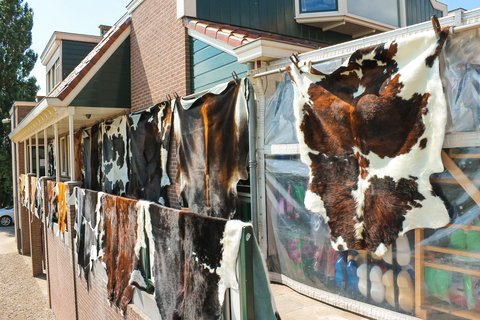If you are one of the lucky hunters that got a nice animal this season and you’ve always wondered what it would be like to have a hide to display then don’t fret. Tanning is not as hard as you might think, and it’s actually quite rewarding.
I was taught early on to use as much of the animal that I killed as humanly possible. I’ve always adhered to this philosophy and it makes me feel better about taking a life. If you know how to skin pretty well, which most hunters do, why not try tanning?
Flesh out the skin
So, we’re gonna assume that you have skinned out your kill without destroying it. The first thing you want to do is flesh the hide. This means getting all of the meat/fat off of it without scraping holes in it or exposing hair. It helps to have a log to lay it over while you work the flesh off. You can use a big knife but make sure it’s not too sharp. Usually a flat piece of steel with a semi-sharp edge works alright. You might have to experiment with what you have.
Salt the hide
The next step is to salt the hide with non-iodized salt. You’ll need about 15 pounds for a deer hide and it’s pretty cheap at Walmart. Don’t worry, you’re probably pretty worn out from the hunt/field dress so all you need to do is lay out the hide and salt the heck out of it. It helps to sta nail the hide to a piece of plywood to keep it flat (only nail it at the edges using small nails). Keep it out of the elements and where animals might get to it. You can relax now for the next week or so, your work is done for now.
Soak the hide
After the hide is cured and all the moisture is out of it (it will kill all the ticks too), you need to find a pretty big, nonmetallic barrel. A 10 gallon plastic garbage can works well. Soak the hide in cool water until soft, changing the water often. Soaking times vary but don’t soak it too long. Keep soaking and squeezing the water out until it’s really soft (don’t wring out the hide).
Re-soak with baking soda
As you soak and re-soak the hide, keep scraping the fat layer off. This takes some time but the more you get off, the softer your hide will be. When you’re satisfied you have it all off, place the hide in lukewarm water containing baking soda (1ounce per gallon). This cleans the skin so it will better accept the tanning solution. Stir it around with a stick for awhile and when it seems nice and clean, soak it in warm water and squeeze it dry (remember not to wring it out).
Soak in ammonium alum and salt
The next step is to soak it in a solution of ammonium alum and salt. You need about two and a half pounds of salt and a pound of ammonium alum for four gallons of water. Soak the hide in this solution for another three to five days. You can also find the ammonium alum at most pharmacies but Van Dykes has all sorts of good stuff for tanning.
Tack to plywood
After your soak, squeeze the hide again, rinse it off with clean water and tack it back to the plywood (hair side down of course). Now you’re ready for your next solution. Mix about four ounces of Neatsfoot oil (you can get it at any tack store or Amazon) to four ounces of warm water and one ounce of ammonia. Work half of this mixture into the hide, let it sit an hour and work the other half in. You can also use rendered brains for this step, but this method is easier. Cover the hide with plastic and leave it out of the sun until the next day.
Stretch over a sawhorse
Ok, last step. It helps to have a helper but you can do it alone. Remove the hide from the plywood, dampen it with a wet cloth and start stretching the heck out of it. Work it until your arms are ready to fall off and then start working it over a sawhorse (I like to use a cable) until it’s as soft as you want it. It takes a little work but the more you stretch/rub it, the softer it will end up. You can apply more of the Neatsfoot solution to make it even softer. Once you have it where you want it, take some really fine-grain sandpaper and lightly sand it.
It does take some work but I think you will be pleasantly surprised with the finished product and you will have something that will always remind you of the animal that gave its life for you. You’ll also feel good about using the whole animal and your ancestors will thank you.
Photo credit: Dreamstime.com








